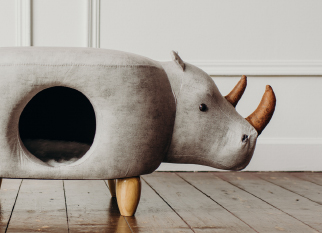What are the humidity requirements for the storage of outdoor rubber extension cord
In the power transmission and distribution industry, the importance of outdoor rubber extension cords as key connecting components between power sources and power-consuming equipment cannot be ignored. Such extension cords must not only have excellent electrical conductivity, but also excellent insulation performance, weather resistance, and flexible use characteristics to cope with the changing outdoor environment. Therefore, in order to ensure that outdoor rubber extension cords always maintain optimal performance during storage, humidity control becomes an indispensable key link.
Effect of humidity on rubber materials
Rubber materials are the core components of outdoor rubber extension cords, and their physical and chemical properties are significantly affected by environmental humidity. Excessive humidity can cause rubber materials to absorb moisture, which can cause a series of problems. First, hygroscopic rubber materials are prone to mildew, affecting their appearance and insulation performance. Secondly, in a high humidity environment, the aging rate of rubber materials will accelerate, causing the material to become hard and brittle, with reduced elasticity, and even cracking. In addition, humidity fluctuations may also cause changes in the internal stress of the rubber material, thereby affecting the stability of its size and shape.
Ideal storage humidity
To ensure that the outdoor rubber extension cord maintains optimal performance during storage, the humidity of the storage environment should be controlled within a specific range. Generally speaking, it is recommended to keep the relative humidity of the storage environment between 40% and 60%. This humidity range can effectively prevent moisture absorption and mildew problems of rubber materials, while avoiding cracking caused by overdrying. Moderate humidity can also maintain the softness and elasticity of rubber materials, ensuring that they can be flexibly bent and not easily damaged during use.
Practical strategies for humidity control
Storage environment selection: Warehouses storing outdoor rubber extension cords should have good humidity control facilities, such as dehumidifiers or humidification systems, to ensure that indoor humidity is always maintained within the ideal range. In addition, the floor and walls of the warehouse should be effectively treated with moisture-proof treatment to prevent the influence of external moisture on indoor humidity.
Humidity monitoring and control: Humidity monitoring equipment is configured in the warehouse to record humidity data in real time and control it according to actual conditions. When the humidity exceeds the ideal range, measures should be taken immediately, such as starting a dehumidifier or humidification system, to ensure that the humidity quickly returns to an appropriate level.
Seasonal management: Develop corresponding management strategies for humidity changes in different seasons. For example, in the rainy season, special attention should be paid to the dehumidification of the warehouse, while in the dry season, humidification measures should be strengthened to ensure the stability of indoor humidity.
The impact of humidity on storage life
Humidity is one of the key factors affecting the storage life of outdoor rubber extension cables. Long-term storage in a high humidity environment will accelerate the aging process of rubber materials, thereby shortening their service life. In addition, excessive humidity may cause stress concentration inside the rubber material, increasing the risk of fracture during use. Therefore, reasonable control of storage humidity can not only extend the service life of outdoor rubber extension cables, but also ensure their safety and reliability during use.


 English
English русский
русский 中文简体
中文简体 Español
Español













